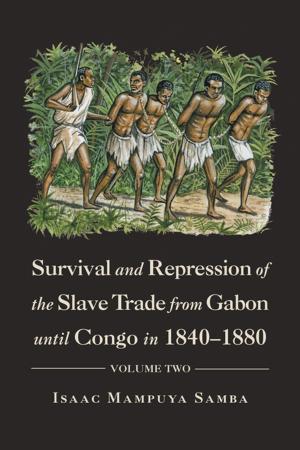Estimating the Missing People in the Uk 1991 Population Census
Nonfiction, Science & Nature, Mathematics| Author: | Dr. H.M. Wasiul Islam | ISBN: | 9781504994231 |
| Publisher: | AuthorHouse UK | Publication: | December 21, 2015 |
| Imprint: | AuthorHouse UK | Language: | English |
| Author: | Dr. H.M. Wasiul Islam |
| ISBN: | 9781504994231 |
| Publisher: | AuthorHouse UK |
| Publication: | December 21, 2015 |
| Imprint: | AuthorHouse UK |
| Language: | English |
In order to assess the coverage and the quality of the census data of the 1991 census, the Census Validation Survey (CVS) was carried out by the Social Survey Division of OPCS. The survey produced estimates of household spaces, households, and persons together with 95 percent confidence intervals. The CVS estimated the census undercount from six different samples, five of which were drawn from the census records and hence dependent. From the comparison between 1991 census results and demographic estimates, it was felt that CVS failed to estimate the true undercount figure of the 1991 census. Moreover, the CVS methodology was unable to estimate the undercount by age, sex, race, and geographic categories. This book presents methods for estimating population by age, sex, and race, as well as geographic categories. Three different estimators, Chandra-Sekar, Greenfield, and El-Sayed Nour, using information from two different sources (census and survey), are discussed. Adjustment factors are generally computed as the ratios of these estimates to the census counts. Average estimates from these three estimators may produce better adjustment factors. Models to produce more accurate estimates of the size of the closed population by using a second sample by matching with census and survey are also discussed. The models we present provide a mechanism for separating out the dependence between census and survey data induced by individual heterogeneity. The resulting data take the form of 2x2x2 table, in which only one of the eight cells is unknown. Using log-linear quasi-symmetry models we describe how to estimate the expected values of the observable cells of this table. To estimate the populations for local authorities (LA), a regression method is presented. The resulting estimates are found to be more accurate than the CVS estimates and were also close to the 1991 demographic estimates. We describe a methodology for estimating the accuracy of the dual systems estimates of population with the help of hypothetical data. The methodology is based on decompositions of the total error into components, such as sampling error, matching error, and other nonsampling errors. An imputation method and some recommendations are also discussed.
In order to assess the coverage and the quality of the census data of the 1991 census, the Census Validation Survey (CVS) was carried out by the Social Survey Division of OPCS. The survey produced estimates of household spaces, households, and persons together with 95 percent confidence intervals. The CVS estimated the census undercount from six different samples, five of which were drawn from the census records and hence dependent. From the comparison between 1991 census results and demographic estimates, it was felt that CVS failed to estimate the true undercount figure of the 1991 census. Moreover, the CVS methodology was unable to estimate the undercount by age, sex, race, and geographic categories. This book presents methods for estimating population by age, sex, and race, as well as geographic categories. Three different estimators, Chandra-Sekar, Greenfield, and El-Sayed Nour, using information from two different sources (census and survey), are discussed. Adjustment factors are generally computed as the ratios of these estimates to the census counts. Average estimates from these three estimators may produce better adjustment factors. Models to produce more accurate estimates of the size of the closed population by using a second sample by matching with census and survey are also discussed. The models we present provide a mechanism for separating out the dependence between census and survey data induced by individual heterogeneity. The resulting data take the form of 2x2x2 table, in which only one of the eight cells is unknown. Using log-linear quasi-symmetry models we describe how to estimate the expected values of the observable cells of this table. To estimate the populations for local authorities (LA), a regression method is presented. The resulting estimates are found to be more accurate than the CVS estimates and were also close to the 1991 demographic estimates. We describe a methodology for estimating the accuracy of the dual systems estimates of population with the help of hypothetical data. The methodology is based on decompositions of the total error into components, such as sampling error, matching error, and other nonsampling errors. An imputation method and some recommendations are also discussed.















